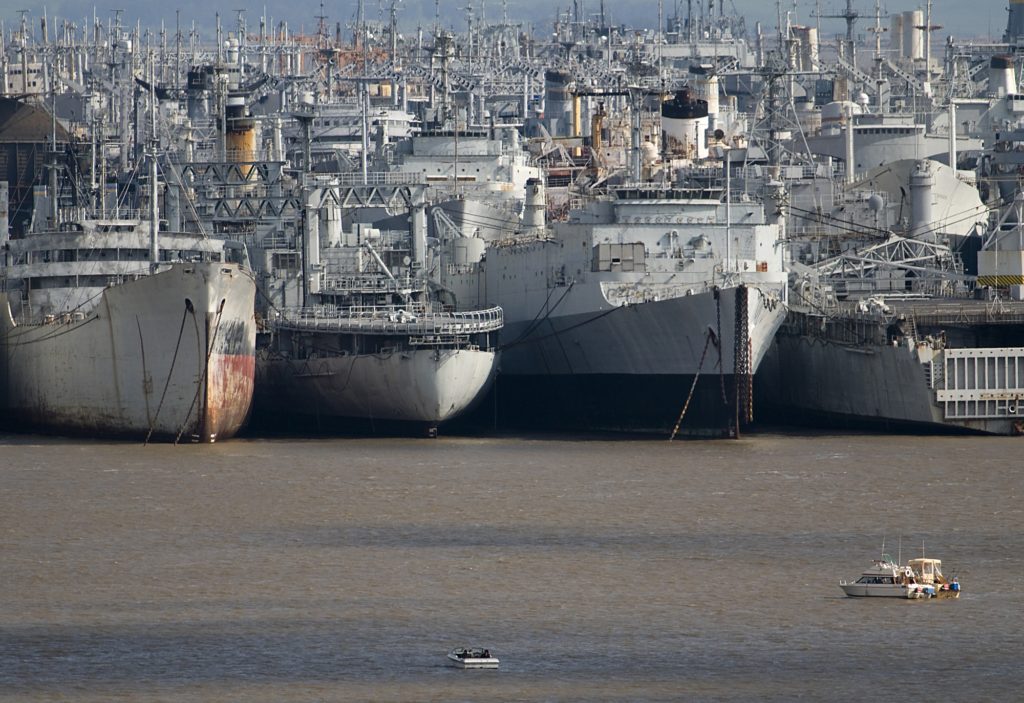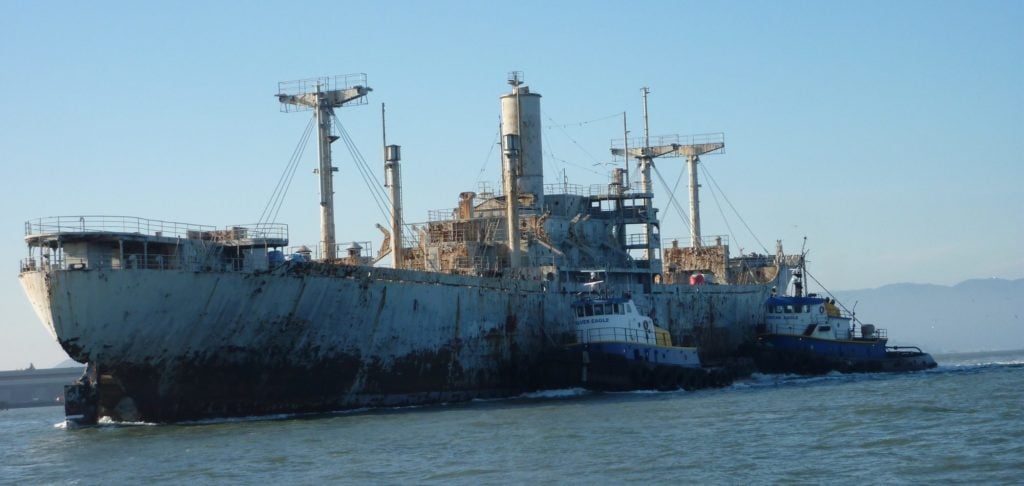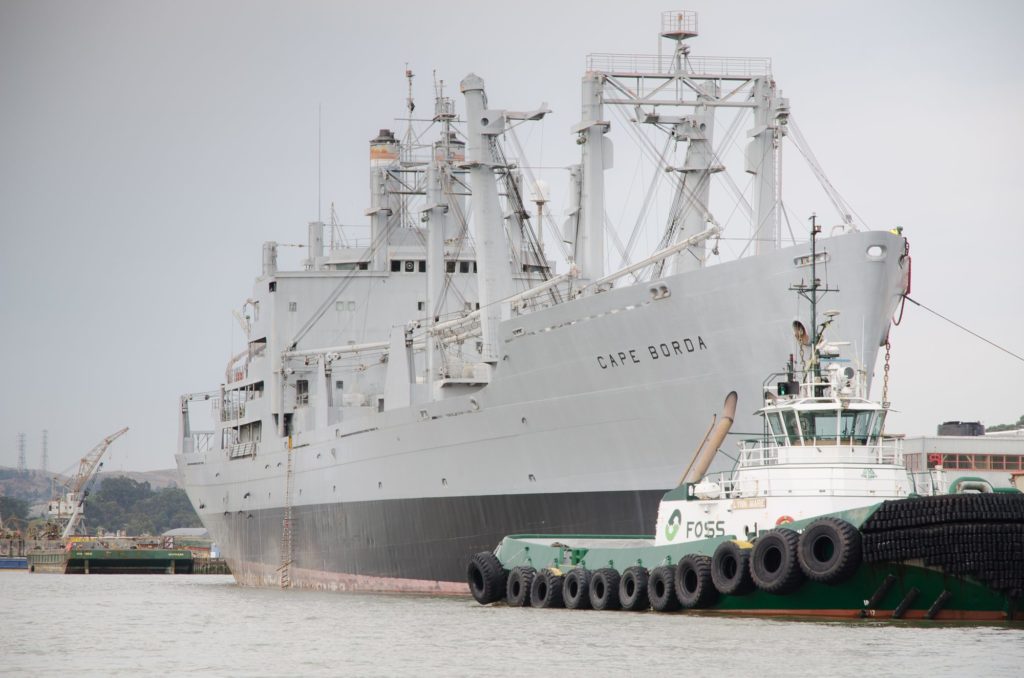Ghostbusting in San Francisco Bay
By: Waterkeeper Alliance

The “Ghost Fleet of Suisun Bay”– the decaying military ships that poisoned the San Francisco Bay ecosystem for 40 years – is finally gone, as a result of legal action brought against the federal government in 2007 by San Francisco Baykeeper, Arc Ecology, and the Natural Resources Defense Council (NRDC). Removal of the 57 mothballed ships and cleanup of the bay began in 2010 and was completed in late 2017.
The Ghost Fleet was a group of long-defunct vessels from World War II and the Korean War, stored in Suisun Bay, a large northern inlet of San Francisco Bay, for possible emergency reactivation. But, never again deployed, they slowly decayed, leaking fuel, rusting and shedding metals and toxic paint – an estimated 20 tons of contaminants – into the bay. Pollutants in the mud directly below the Ghost Fleet were found to be in concentrations that exceeded California’s hazardous-waste toxicity criteria.
“The pollution levels were high enough to harm bottom-dwelling species, like green sturgeon and Sacramento splittail, which means those toxins were also introduced into the bay’s food chain,” said San Francisco Baykeeper Sejal Choksi-Chugh.

Suisun Bay and the adjacent Suisun Marsh – the largest brackish marsh in the western United States – provide critical habitat for several species of endangered fish, including Chinook salmon and Delta smelt. The wetlands in the area are home to hundreds of native bird species, and they are an important feeding stop for thousands of migrating water birds each year.
Baykeeper’s agreement with the federal government called for measures that went beyond national environmental requirements. It mandated that the federal government first remove paint chips and metals from the decks of all 57 ships. Over 140 tons of paint and rust chips were collected in large barrels and taken to a hazardous-waste-disposal facility. The government was also required to clean the hulls in dry-docks in order to remove invasive species and peeling paint without harming the bay, as well as implementing annual stormwater-pollution controls, such as water filters and maintenance sweeping, to keep rain from sending more contaminants into the bay. Finally, the government had to remove the ships in the worst condition first, in order to clean up the most urgent pollution threats as quickly as possible.
“The pollution levels were high enough to harm bottom-dwelling species, like green sturgeon and Sacramento splittail, which means those toxins were also introduced into the bay’s food chain.”
— San Francisco Baykeeper Sejal Choksi-Chugh
Representatives from Baykeeper, Arc Ecology, NRDC and the Regional Water Quality Control Board conducted an onsite inspection each year. “Each time we found problems with some of the remaining ships, we made recommendations for improvements, and to their credit, the federal government implemented the new pollution controls,” said Choksi-Chugh.
Most of the ships that were removed have been dismantled and recycled. Some were dismantled locally at a former naval shipyard on Mare Island, in nearby Vallejo. The last two ships, the Cape Borda and the Cape Breton, were transferred to Mare Island for an initial cleaning, and traveled from there to Texas to be fully dismantled and recycled for parts.

Since the cleanup began, more surplus military ships have been transferred to Suisun Bay for storage. But the federal government is now required to comply with the Clean Water Act and use pollution controls to prevent contamination from these additional ships. “Moreover,” said Choksi-Chugh, “as a result of our legal action, the government indicated they would also apply the same pollution controls they agreed to in San Francisco Bay on mothballed ships nationwide.”
Experts estimate that the cleanup and removal of the Ghost Fleet has prevented an additional 50 tons of heavy metals from being blown and washed into San Francisco Bay.